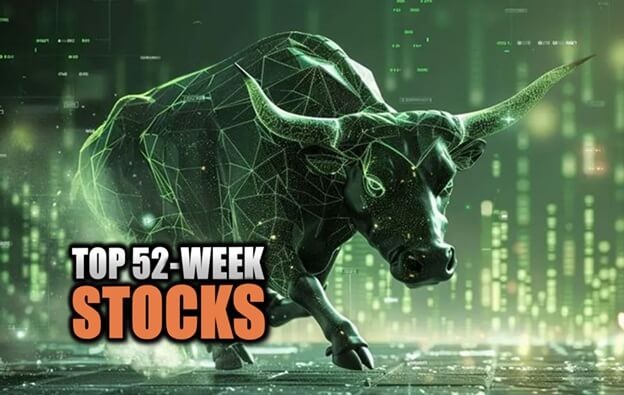JPMorgan New Stock Market Forecast Model Predicts 96% Chance of SP500 Surge
JPMorgan new stock market forecast model signals a 96% chance of an SP500 surge, using momentum, valuations, and market positioning.
 Jun 26 2025
Jun 26 2025
JPMorgan new stock market forecast model predicts a 96% probability that the S&P 500 will rise in the next six months, a figure that has traders and analysts reassessing their strategies.
JPMorgan new stock market forecast model isn’t just another bullish outlook. It’s a data-driven, deeply analytical signal built on a robust methodology that has managed to outperform its peers, not just in forecasting gains, but in anticipating downturns.
Developed by JPMorgan strategy team led by Nikolaos Panigirtzoglou, the model analyzes six core parameters: trading volumes, valuations, market positioning, capital flows, economic momentum, and price momentum. Each factor is measured against historical norms. If a component deviates sharply from its baseline, the model interprets it as a signal of a market shift, either positive or negative.
What sets JPMorgan’s S&P 500 forecast apart is its dual-edge accuracy. While most models are good at riding upward trends, given that equity markets tend to rise over time, this one stands out by also anticipating market drops with impressive precision. During backtesting, the model correctly predicted market downturns 76% of the time. In post-2022 real-time performance, it still managed a 63% accuracy rate in forecasting declines, outperforming traditional models that tend to falter in bearish conditions.
According to the latest signals, JPMorgan’s model now sees a 96% chance that the S&P 500 will rise over the next six months. That’s a strong conviction, especially in the face of mixed economic data, geopolitical stress, and lingering inflation concerns.
What’s driving this bullish call? Strong economic momentum, measured by the global manufacturing PMI, points to accelerating industrial activity. Rising trading volumes reinforce confidence in the current rally. Despite elevated valuations, market positioning isn’t overcrowded, suggesting there’s still room to run.
But the model isn’t blindly bullish. It warns that excessive optimism, such as extreme long positions or heavy fund inflows into equities at the expense of bonds can be red flags for short-term pullbacks.
One of the more counterintuitive findings in JPMorgan’s model is its view on valuation. Historically, low valuations have been seen as indicators of high future returns. Not so here. The model reveals that cheap stocks don't necessarily deliver higher future performance. In fact, low valuations may reflect a bond market anticipating an economic slowdown. For example, when the 10-year Treasury yield drops, it’s often a harbinger of weaker growth meaning that seemingly "cheap" stocks might be priced that way for a reason.
JPMorgan’s bullish model is echoed, albeit with more caution, by other leading firms. A consensus forecast from Goldman Sachs, UBS, Citi, and Morgan Stanley places the S&P 500 at around 6,500 by mid-2026 about a 6.5% increase from current levels.
Of course, there’s a broad range of opinions. RBC Capital Markets warns of a possible 20% correction, citing geopolitical risks and inflated valuations. Citi, on the other hand, remains calm and advises investors to stay the course, pointing to the resilience of the U.S. market even during global crises.
So, while there’s no unified view, JPMorgan’s 96% probability forecast adds a powerful, data-supported tailwind to the bullish case.
At a forward price-to-earnings (P/E) ratio of about 22, the S&P 500 is well above its historical average of approximately 17. Some skeptics see this as a warning sign of overvaluation. But others argue the new era of AI-driven growth justifies the premium.
Take Google’s IPO 20 years ago. It launched at a P/E of 50 considered extreme at the time but with annual revenue and profit growth of 70%, it delivered a 100x return over two decades. If tech leaders today can deliver even 15% growth, today’s P/Es might look modest in hindsight.
JPMorgan’s S&P 500 forecast model gives more than a number, it offers a risk-adjusted signal that could justify staying long in a market many still find fragile. At the same time, it serves as a warning: momentum must be monitored carefully. When indicators become too hot and the crowd too confident, even the strongest markets can correct. The model isn’t a crystal ball it’s a probabilistic tool. But it’s a highly advanced one, with a better track record than most.
With 96% odds of a six-month rally, JPMorgan’s new stock market forecast model is both a vote of confidence and a cautionary tool. It challenges old assumptions like the link between low valuation and high returns and highlights the value of watching momentum, flows, and positioning just as closely as earnings reports or macro data. Whether you’re a short-term trader or long-term investor, this model could be your new north star at least for now.
Latest Analysis
08:44 PM
01:15 PM
Yesterday at 08:37
Unlock Exclusive Stock Insights!
Join StocksRunner.com for daily market updates, expert analyses, and actionable insights.
Signup now for FREE and stay ahead of the market curve!
Why Join?
Find out what 10,000+ subscribers already know.
Real-time insights for informed decisions.
Limited slots available, SignUp Now!
Please note that the article should not be considered as investment advice or marketing, and it does not take into account the personal data and requirements of any individual. It is not a substitute for the reader's own judgment, and it should not be considered as advice or recommendation for buying or selling any securities or financial products.



 Alert.Eagle
Alert.Eagle


















